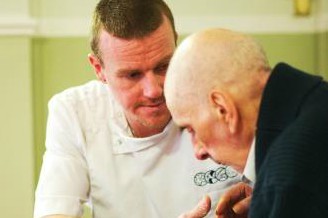The problem
There’s a great deal of commentary in the media around the use of Skype for GP consultations. However, there seem to be two problems – it fails to pass governance hurdles or is abandoned for lack of patient interest. We thought Skype had potential, but have adopted a different approach; rather than use it for general consultations, we have targeted specific clinical areas.
What we did
We have been using Skype as part of a care project focused on long-term conditions, funded by the West Midlands Academic Health Science Network, a collaboration between academia, the NHS and industry.
The first approach has been with nursing homes. In Stafford, a practice has created V-Doc – an iPad connected to Skype on a trolley with a variety of self-care devices, for example a pulse oximeter. The V-doc device is moved around the nursing homes, allowing the GP to carry out consultations from the surgery with remote contact with each patient. The privacy impact assessment and medical defence cover are in place and each day the doctor calls the nursing homes via Skype to carry out preventive consultations. If anything is deemed to be more urgent or need a face-to-face consultation, it is managed as normal. The doctor won’t diagnose a condition via Skype but offer general medical advice. It seems much more effective than a consultation over the phone as doctor and patient can see each other.
In Staffordshire, we are planning something similar with the mental health trust. It has 37 sites, so Skype minimises the time that multidisciplinary teams (MDTs) have to travel for meetings and the trust is planning to use Skype for clinician-patient contact soon, and MDT discussions in a pilot of its ‘multi-specialty care provider’.
Challenges
There are many governance issues and protocols, but our clinical commissioning group Caldicott guardian has signed it off so there is nothing for practice teams to do except keep to the protocol (which contains guidance on inclusion criteria and a checklist of what to do during the consultation). The protocol fits with MDO and GMC guidelines.
Other concerns raised by GPs, practice nurses and practice managers were limited access to Skype for some patients. They were also concerned about high staff turnover in the practice team, meaning they would have to keep upskilling individual clinicians to use Skype. Clinicians were unsure if the image would be good enough for certain conditions, for example to diagnose a rash. Restricting Skype to certain clinical areas solves this, but if rolling it out further we would need specific selection criteria. The costs of rolling it out are minimal if the commissioning support unit lifts the firewall on practice computer systems or adds the Skype icon and the patient has their own screen. It replaces face-to-face consultations, so is around the same cost in terms of time.
Results
The practice using Skype in the care home says this approach massively improves the service offered and reduces the time and cost of call-outs for low-level medical advice. For around 50% of the Skype consultations, the GPs don’t have to be called out, whereas they would have previously. There are countless examples in the NHS of purchasing expensive software licences or equipment only to see them mothballed due to lack of uptake. By getting Skype delivery gradually established this way we can trial in a low cost-fashion.
Dr Ruth Chambers is a GP in Stoke-on-Trent, chair of NHS Stoke-on-Trent CCG and co-author of Digital Healthcare – The Essential Guide. Marc Schmid is a co-author of the book, a digital health consultant and helped write this piece
Pulse October survey
Take our July 2025 survey to potentially win £1.000 worth of tokens













